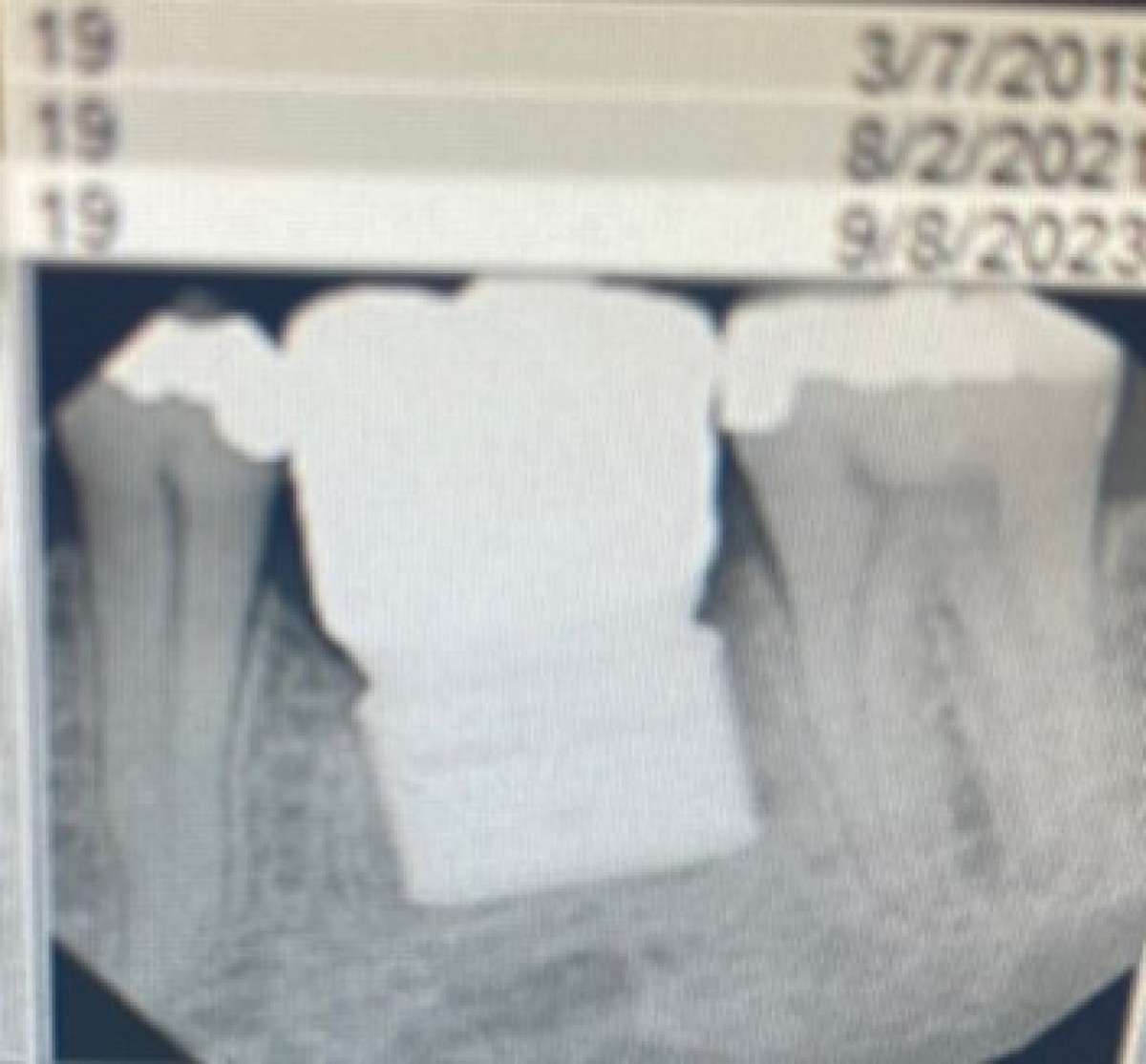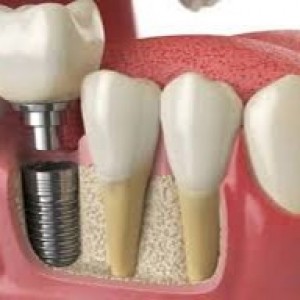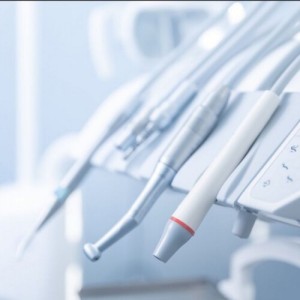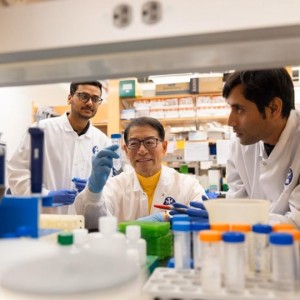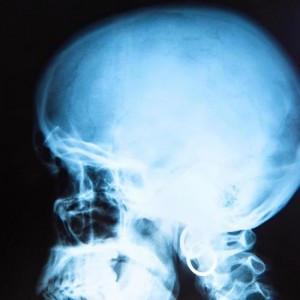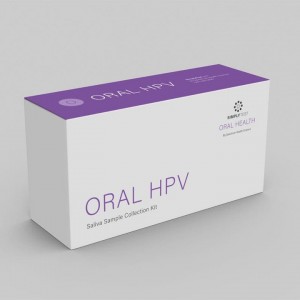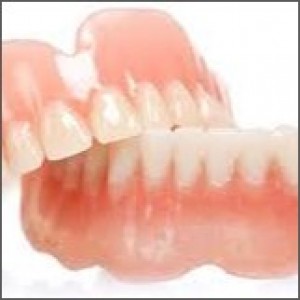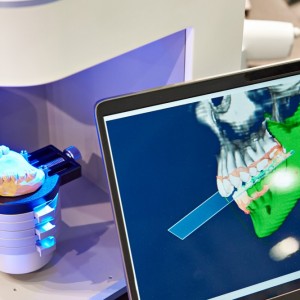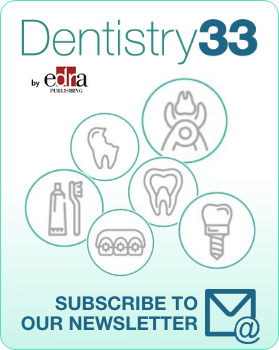
Proximerge 2 clinical study enrolls 32 patients to date
Mary Guiden
Earlier this year, Dr. James Grant, DDS, was the first patient to take part in a clinical study in Colorado to assess the surgical and restorative procedures of Proximerge 2, a new implant that eliminates the conventional round device. As we previously covered in Dentistry33, the new implant’s design reduces or eliminates gaps where food typically collects, and it maintains a narrow side-to-side or buccal-lingual profile to preserve bone.
Being a patient in this study is not his only role. Grant has been working on the concept since 2007 and is collaborating with a team — including Dr. Brad Renehan, oral and maxillofacial surgeon, restorative dentist Dr. Lee Smith and CEO Aaron Bass — to bring this product to more patients in the future. In a recent interview, Grant described his patient journey, lessons learned and what comes next.
Q: What’s the latest with the clinical study?
Grant: Generally speaking, everything is going great. We’ve been working on this project for years, and we had a lot of different iterations. We’ve pivoted and changed like any startup company. But my original reason for creating this new implant has not changed. I’m doing this to improve the oral health of patients.
We’re up to 32 surgical patients in the study. As the first patient, we learned so much from my experience. We’ve designed instruments based on my surgery that will help with implant surgeries.
Dr. Renehan did an immediate replacement with my implant, and we do not recommend that.
With the help of major dental labs and other companies, we’re exploring how to best implement a guided surgery technique for Proximerge 2 to deliver streamlined workflows for dentists and oral surgeons.
Q: How will these surgical guides streamline the process for dentists?
Grant: We get a CBCT x-ray on every patient, plan for the surgery using software and we can place the implant exactly where we want it. The surgical guide snaps on a patient’s teeth. It lies on the bone and then you take the trephine, which is a surgical instrument used to cut cylindrically into bone, to create the necessary osteotomy while harvesting living bone for use around the surgical site.
Using these guides, Dr. Renehan could teach a clinician in 10 minutes how to place our Proximerge 2 dental implant.
Once our design is in various software libraries, there won’t be any need for guess work, if you will.
We’re also learning a lot through the surgeries in the clinical study, including that we do not recommend immediate placement. The difference between a good or a great placement of an implant often comes down to nuance. We’re gaining tremendous insight into the nuances associated with delivering great placements of Proximerge 2. Our collaborative work with a restorative dentist and the labs ensures we’re able to fine tune the experience for all participants in the implant process.
Q: How has industry responded so far?
Grant: In March, I went to the Academy of Osseointegration’s annual meeting in Phoenix. It’s one of the largest dental implant conferences in the world, with more manufacturers at the meeting than any other conference I attend.
I talked with multiple industry reps, and I was very transparent. As I’ve told people, we’re developing this implant because there’s a problem with current designs and patients complaining about constantly getting food caught around their dental implants.
The reps I spoke with said, “Yes, you’re right.”
The patient is our customer. If you don’t keep the customer happy, they’re not going to buy more implants or recommend them to family and friends.
Patients with traditional dental implants must carry a box of toothpicks and proxabrushes because everything they eat gets caught around the implant.
What’s even more important is that organizations including the American Academy for Oral Systemic Health recognize that having food, biofilm, bacteria and plaque trapped around and under the gum tissue of the implant can be linked to all sorts of systemic diseases. This includes type 2 diabetes, heart disease, rheumatoid arthritis and other medical conditions.
Q: How has your healing process gone, as patient no. 1 in the trial?
Grant: I refer to myself as the “lab rat.” I wanted to be the first patient and I pushed the envelope by wanting the implant placed immediately after extraction. The procedure was performed by Dr. Renehan in January. My implant looks great but it’s not going to work in the long-term.
I’m the only patient that had an immediate placement. It was important for me to be the first, and I knowingly pushed the boundaries. The knowledge we gained from my implant about the nuances of placement, restoration and removal was invaluable.
I now have a bone graft, and I look forward to receiving a new Proximerge 2 in the upcoming months. I fully expect I’ll enjoy the great results we’re seeing in other patients. My wife will also soon receive her own Proximerge 2.
We have a lot of dentists and oral surgeons who want to be involved, but we’re taking a disciplined approach. We want to get to 30 or 40 patients that we follow for a while. We don’t want to make any false claims or create false hope. We have begun restoring our implants using cemented and screw retained crowns and the results are what we anticipated.
Q: How disappointing is it that your own implant did not survive?
Grant: I would prefer that something like this happens to me, and not to other patients. It’s important that we improve the health of people, make it easier for dentists, and ensure patients have a better outcome.
But I can easily floss around my new implant, demonstrating the outcome we designed to eliminate the interproximal gaps most round implants create.
Q: What else would you like readers to know?
Grant: We are getting close to publishing some of our results and findings. Dental industry leaders and some significant dental companies have taken note of our study. We’re even getting some initial attention from venture capitalists and private equity. It’s an exciting time for us.
People get what we’re doing and what we’ve created. We’re not an idea anymore.
We have an FDA-cleared device, we are gathering valuable and encouraging data, and we’re already expanding and improving what we’ve created. Patients are so happy with it, especially ones that already have traditional round implants and have first-hand experience with the problems we are solving.
For more on Proximerge 2 and the team: https://www.quadricbiomed.com/
 Related articles
Related articles
News 23 October 2025
The global dental implants market is projected to grow from USD 5.45 billion in 2024 to USD 15.41 billion by 2035, expanding at a CAGR of 9.95% from.
Endodontics 16 October 2025
Endodontic or dental implant therapy: The factors affecting treatment planning
Clinicians are confronted with difficult choices regarding whether a tooth with pulpal and/or periapical disease should be saved through endodontic treatment or be extracted and replaced with an...
Editorials 07 August 2025
Researchers are developing ‘smart’ implants that would provide a more natural feel while chewing or talking
Implantology 25 July 2025
Background: Cytokine–microbiology–virology monitoring after implant placement may help to develop profiles of variables that can help to explain interaction between the immune system and alveolar...
Patients with a history of head and neck cancer resection require extensive prosthodontic rehabilitation following cancer treatment.
 Read more
Read more
Much like EMTs rushing to the scene after an accident, stem cells hurry to the site of a skull fracture to start mending the damage. A new finding has uncovered the signaling mechanism that triggers...
Products 05 November 2025
SimplyTest has launched a groundbreaking saliva-based test to detect high-risk strains of oral human papillomavirus (HPV), a major cause of oropharyngeal cancers.
News 05 November 2025
Perimetrics, Inc., a dental technology company pioneering quantitative diagnostics, announced today that the U.S. Food and Drug Administration (FDA) has granted clearance for the InnerView...
News 05 November 2025
On October 15, open enrollment for Medicare began nationwide. Hundreds of thousands of seniors in New Jersey will once again face the challenge of finding the right Medicare coverage, including the...
Digital Dentistry 04 November 2025
Digitalisation is an expanding field in dentistry and implementation of digital teaching methods in dental education is an essential part of modern education.




